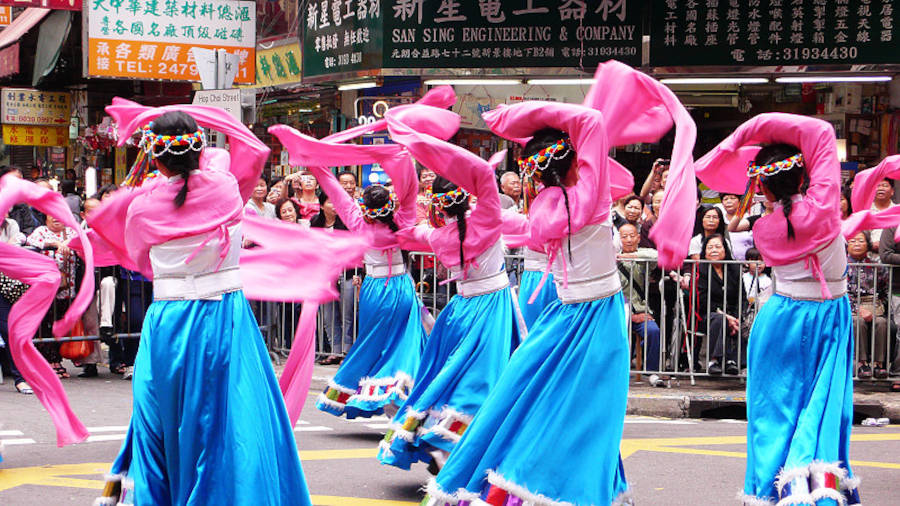It’s not every day that we have a legendary and historical female figure to commemorate, but when we do, Tin Hau (天后) is among the ranks. Tin Hau in Cantonese or Tian Hou in Mandarin, meaning Empress of Heaven, is known as the goddess of the sea in Hong Kong, Taiwan, and Southern China.
On May 12, 2023, we celebrate Tin Hau’s birthday for Tin Hau Festival. She’s a protector of one of Mother Nature’s breathtaking elements and grants this protection to seafarers. See how Tin Hau has made centuries-long waves.
What is Tin Hau Festival?
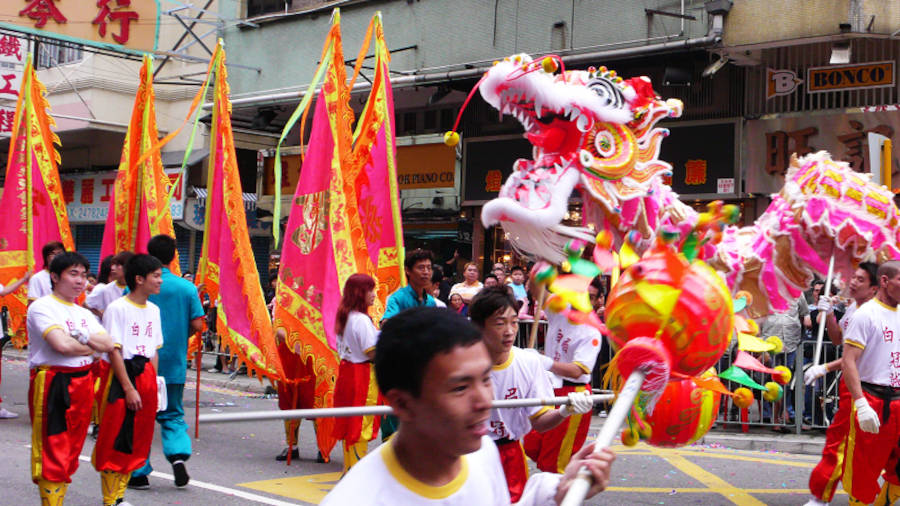
Tin Hau Festival (天后誕, pronounced tin hau daan in Cantonese) marks the birthday of the sea goddess. It is celebrated on the 23rd day of the third lunar month, which falls on May 12, 2023 this year. Tin Hau was first honoured in the Song Dynasty (960-1270 AD) and her recognition soon shot up from there. Over the years, other titles have been bestowed upon her with each dynastic successor unveiling greater recognition for the goddess.
For example, in 1281, Tin Hau was named the “Heavenly Consort” who protected the nation by the Mongol emperor Kublai Khan. Then, a sea admiral from the Ming Dynasty (1368-1644 AD) built shrines in her honour aboard every ship. It wasn’t until 1684 that Emperor Kangxi from the Qing Dynasty (1644-1912 AD) gave the goddess the highest ranked title: Tin Hau, Empress of Heaven.
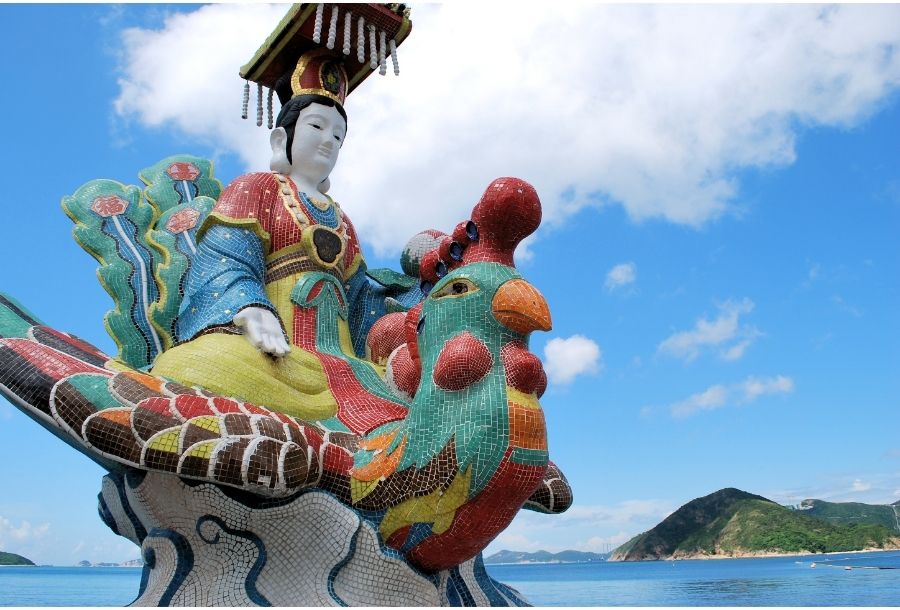
Thus, throughout the years, Tin Hau’s significance grew. People of the sea brought with them folklore about the divine goddess and made her a prominent figure wherever they settled. Despite her widespread recognition in Hong Kong, which has fishing village roots, Tin Hau Festival is not a public holiday.
Who is Tin Hau?
Tin Hau started as an average village girl from humble beginnings. Her family hailed from the fishing island Meizhou, located in Fujian Province near Taiwan. Born in the 10th century, she was given the birth name Mòniáng (默娘), meaning “silent girl,” as she didn’t cry like other babies.
Growing up, she devoted herself to accepted practices for women like spinning and weaving, studied Taoism, and worshipped Guanyin, who is the goddess of mercy. But unlike other women and because of her devotion to Guanyin, she never married by choice.
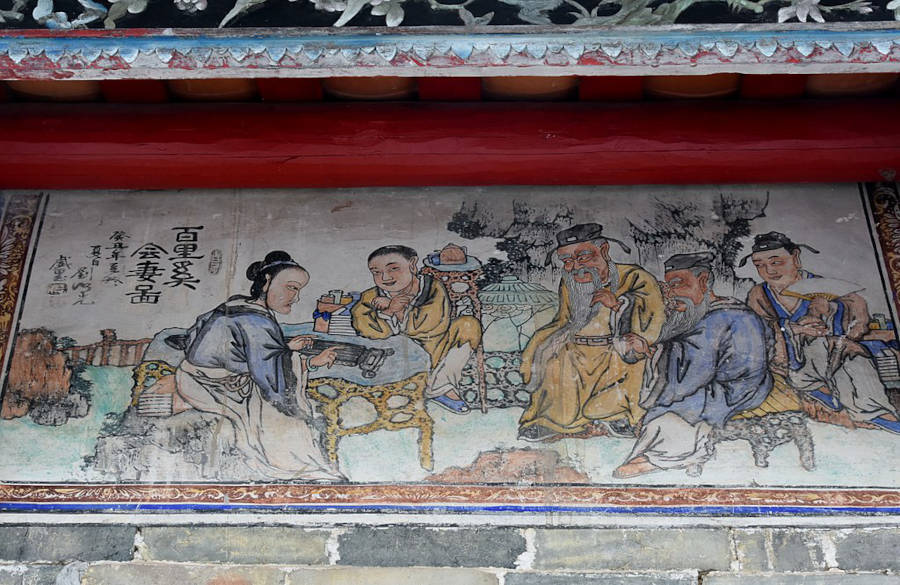
One day, Mòniáng fell into a trance when a typhoon arrived at sea as her father and brothers were out fishing. In her trance, her spirit drifted to sea to save her father and brothers. All but one brother managed to get home safely, as Mòniáng’s mother woke her up from the trance midway through the rescue. Since this incident, she became known as Tin Hau, the sea goddess and patron for fishermen. Her alternate name is Māzǔ (媽祖), meaning Mother Ancestor.
Importance of Tin Hau in Hong Kong
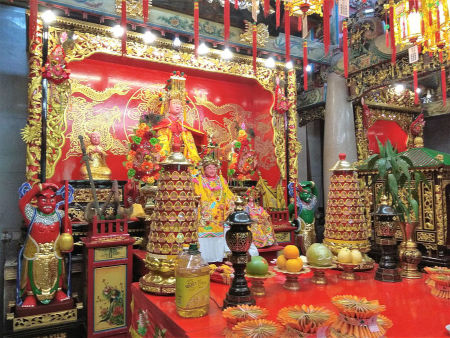
Given her heroic deed, Mòniáng ascended to Heaven and was thus blessed with the honorific title, Tin Hau.
In Hong Kong, she holds great importance, especially among the fishermen and other seafarers. Many communities in Hong Kong’s early days made a living from the sea, in particular, the Tanka people. The Tanka, also known as the boat people, would have a statue of Tin Hau aboard their vessels for blessings and protection.
Despite the dwindling Tanka population and increasing livelihood on land, Tin Hau is still highly regarded as her remarkable abilities extend to granting wishes and casting evil spirits away. Tin Hau’s significance is such that an MTR station was named after her because of its proximity to the Causeway Bay Tin Hau Temple.
How to celebrate Tin Hau Festival?
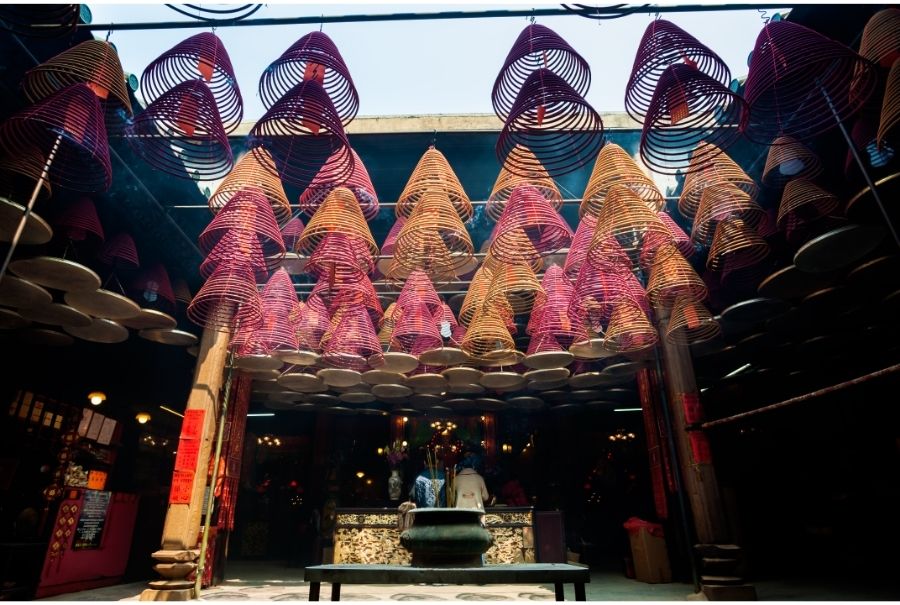
Every festival warrants a celebration and Tin Hau Festival is no exception. Celebrations that occur range from loud and raucous street performances to the hushed tones of prayers and sacrificial honouring.
Performers and worshippers of the goddess parading down streets and coastal walkways is one common sighting. They march to the boisterous clanging of drums, cymbals and often times, a whole procession of a marching band and kung fu practitioners. All the performers would dress in costumes that bear resemblance to mythical creatures and martial arts uniforms.
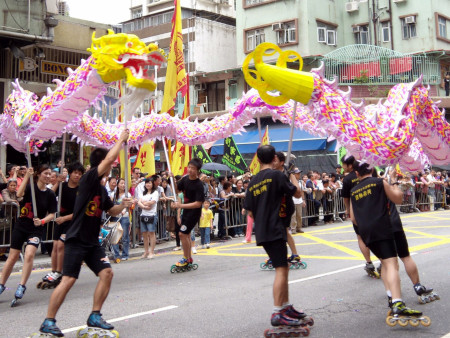
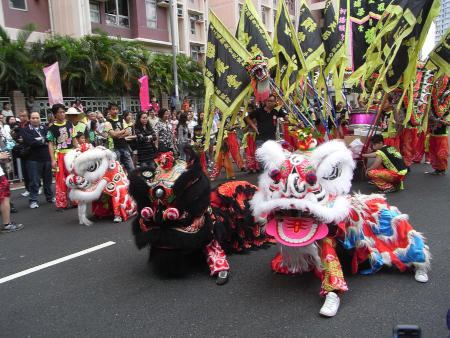
In unison with the grand spectacle, dragon and lion dances take place. These dances are also known in other major Chinese holidays for bringing good luck and prosperity. They require a group of coordinated dancers to imitate the lively moves of the animals, giving life to the look and adding more zest into the festivities. The lion dance features at least two performers going undercover in the lion costume and making lively movements, whereas the dragon dance requires a larger number of people lined up to carry the dragon effigy up on sticks, imitating the smooth flowing of the legendary dragon.
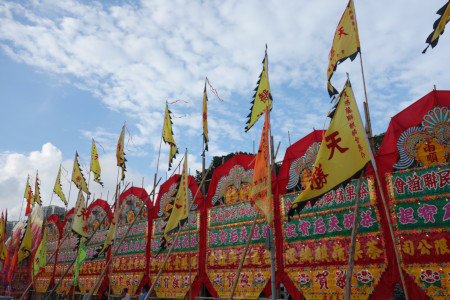
Large paper floral tributes, known as fa pau (花炮) in Cantonese, are grand and embellished ‘flower cannons’ that tower meters high. The beauty of these floral wreaths is likened to the beauty of the goddess. At celebrations, these wreaths are offered as raffle prizes and whoever wins will have good fortune and fertility.
Other festival activities include Cantonese opera performances organized by neighbourhood committees to pay homage to Tin Hau, as well as visiting temples that honour the goddess.
How many Tin Hau temples are there in Hong Kong?
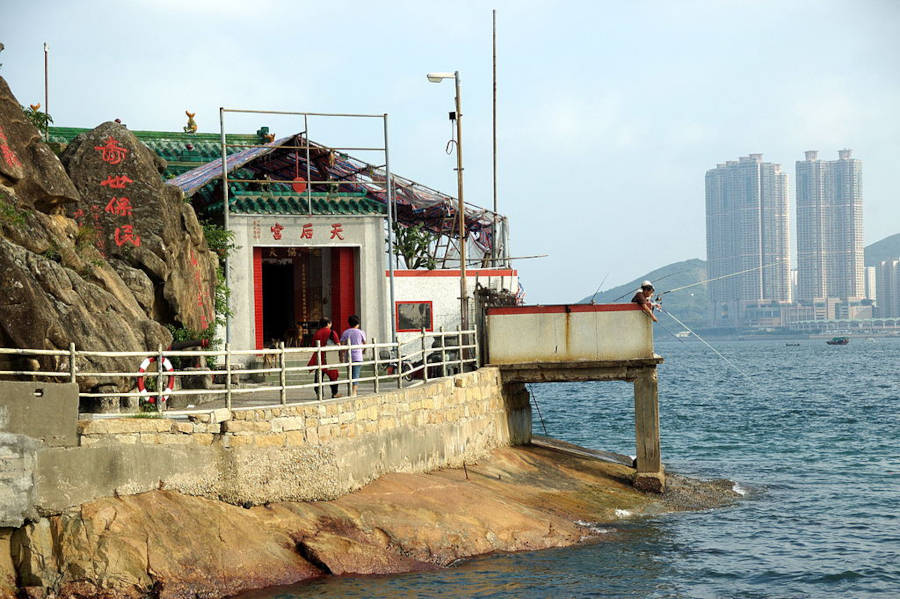
There are over 60 temples in Hong Kong that are fully or partially dedicated to the goddess of the sea. Tin Hau’s temples are often fittingly located near or beside bays. At the temples, worshippers would pray and make sacrifices to the divine goddess.
The largest Tin Hau Festival celebration takes place in Yuen Long, featuring a three-hour-long parade that ends at Tai Shu Ha Tin Hau Temple. It’s probably the most lively and colourful of all the Tin Hau festivals occurring around town.
Tai Miu is another temple located in Joss House Bay, Sai Kung, which is the biggest and oldest temple dedicated to Tin Hau. Built circa 1266, it is classified as a Grade I Historic Building. Festivities on islands are also big ones as fishing communities, like the one on Cheung Chau, have strong ties to the waters and fishing as a way of life.
Other traditional Chinese festivals: Lunar New Year — Lunar New Year Fair — Birthday of Che Kung — Chinese Lantern Festival — Kwun Yum Treasury Opening Festival — Ching Ming Festival — Tin Hau Festival — Cheung Chau Bun Festival — Buddha’s Birthday — Birthday of Tam Kung — Dragon Boat Festival — Birthday of Kwan Tai — Qixi Festival — Hung Shing Festival — Hungry Ghost Festival — Mid-Autumn Festival — Monkey King Festival — Birthday of Confucius — Chung Yeung Festival — Winter Solstice Festival.
Header image credits: Tak Lau via Flickr


